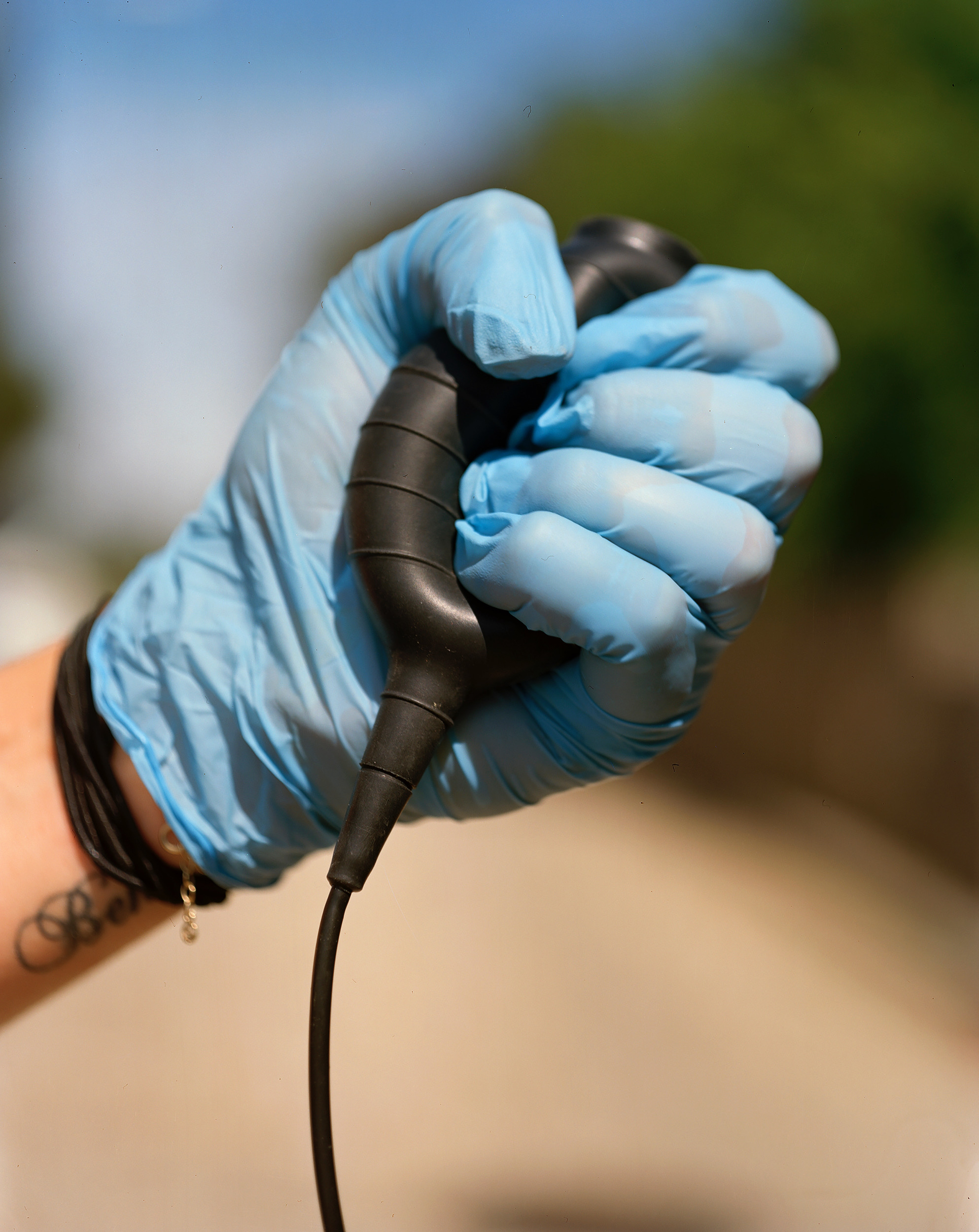
- This event has passed.
Sam Richardson
October 9, 2021 - October 24, 2021

(What I’ve Realized About Coping and Coalescing)
Sam Richardson
The gallery is open Wednesday-Sunday, 12-6pm
Life persists, life keeps moving, but it doesn’t look, smell, feel and sound the same now. The future, as we understand it, is unknown; the future feels like a void for many of us, and for some it has undoubtedly already felt like this. The outstretch of possibilities has faded to a different landscape, and so has the ability and the nature of making and creating as we knew it. Or so it feels.
The work I was making before March 2020 seems to be part of the past, part of a time “before,” an attempt at a record. A time before we could not gather, could not touch each other, and could not move freely — albeit in a violent society. This too will shift, it already has to an extent, and most foundational realities have not changed. “Normal” was never good, we should not go back to “before,” back to “normal.”
The work displayed does not commit itself to one particular form of the “photograph” or the image, both in format or style. Moving between different types of cameras and different moments of capture, I am intending to show the friction that occurs between intent and circumstance. Some images were planned ahead of time, others are found in a moment guided by shared thought and found circumstance.
An exploration of collaboration is at the core of this work, and in response to that investigation so is self-portraiture. Exposing the body that makes the image I see as an attempt at negotiating the stakes of capturing another’s likeness. The presence of my body in these images is conceived as a through line, an attempt to be an aid for context, functioning as both the figure seen as well as the body making the photographs/videos. The body can’t exist in the world without being politicized, both in its form and experience, and in its bodily history. What interests me is the friction between how the lived structures and rules that surround said bodies rub up against those that run parallel to them—family lives, sex lives, production, desire, violence, pain, joy, etc.
A foundation that spawned much of the work here was historical research of a dethroned female bearded saint, St. Wilgefortis. She came to be the patron saint of all those who wished to be liberated from tribulations of abuse, in particular abusive husbands, and survivors of assault, rape and incest, as well as those imprisoned. Her removal from the church calendar, and her contentious relationship with the church due to her likeness to Jesus, represents an erasure of recorded and historical violence against particular bodies—most notably women, queer, non-binary and transgender people.
The photographs, like the video, begin and end with images made since Covid-19 entered the global experience. The bookends serve to intertwine the past with present, and further along, the future. The people in my images are friends, lovers, family. There is often reference to images being made with love, using an apparatus riddled with a history and use of the opposite. To image a person with love, to me, means to consider and hold space for an individual experience, while also paying tribute to their surroundings as much as possible.
Note: The majority of these images were made from June 2019 – March 2021. The uprisings of June 2020 are noted within the work, but also do not attempt to document or propose that this moment in history has been different from any other.
Land Acknowledgement: I would like to respectfully acknowledge that the land HR stands on is ancestral and unceded Indigenous lands, specifically the territory of the Chumash, Tongva and Kizh people. Beneath the contemporary surface of any site in the United States, there are histories of belonging that have been erased, overlooked, contested, and forgotten, as well as contemporary communities that continue to endure, create and thrive.
As an occupier of these territories, I recognize the continual displacement of Native people by the US and are aware that land acknowledgements are often used as an empty stand-in for actual decolonization work. This is something to bear in mind while continuing to build frameworks to dismantle the ongoing effects of colonial legacy, both in the art spaces and elsewhere.
Organized by Clara López Menéndez with the help of Jane Orr, Jordie Oetken, Erin Bagley and Kate Hall
THANK YOU:
Clara López Menéndez
Jordie Oetken
Jane Orr
Erin Bagley
Kate Hall
Jacqueline Amezquita
Catherine Opie
Heather Rasmussen
Virgil Taylor
Carolyn Lazard
Gabby Miller
V Haddad and Emily
Hea-Mi Kim
Luis miguel Bobadilla
Arisleyda Dilone
Ed Beller
Alison Veit
Valeria Tizol Vivas
Alison Veit
Elias Pack
Katherine Finkelstein
Rose Mori
Sydney Acosta
Chester Toye
Amelia Bande
Vishal Jugdeo
Candice Lin
Mom and Dad
Sofia Robledo Rower
Kennady Schneider
Jane Margarette
Blake Jacobsen
John Birtle
Human Resources